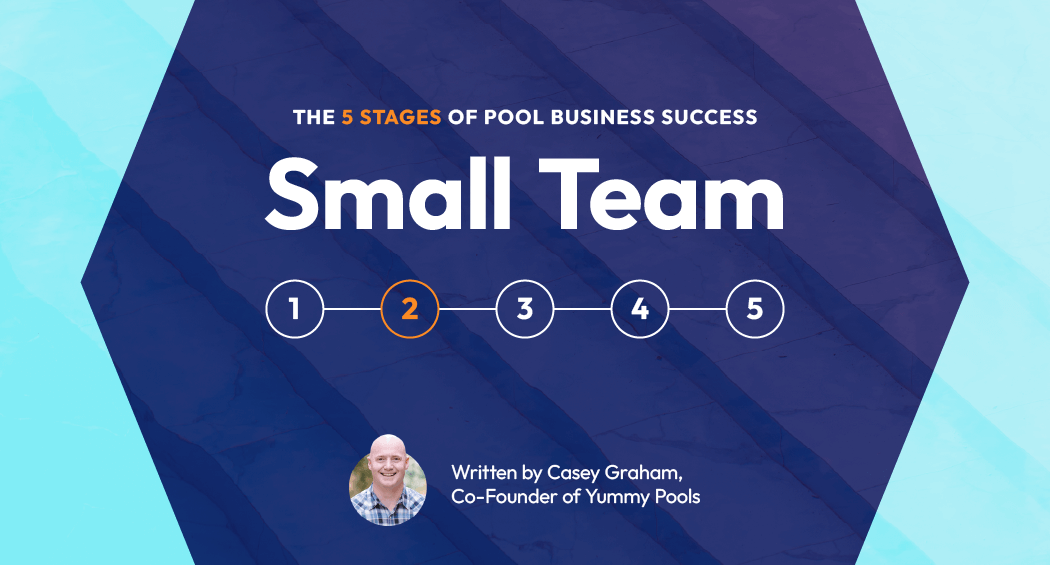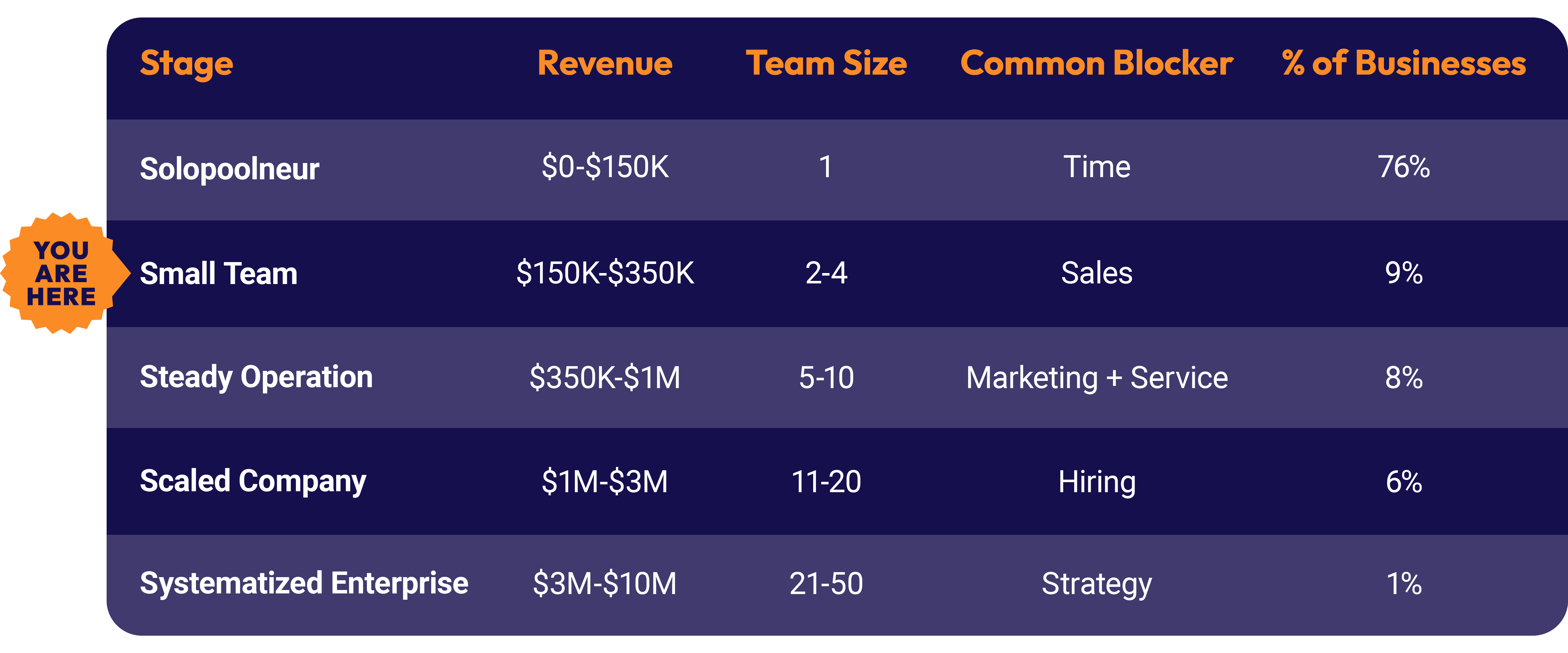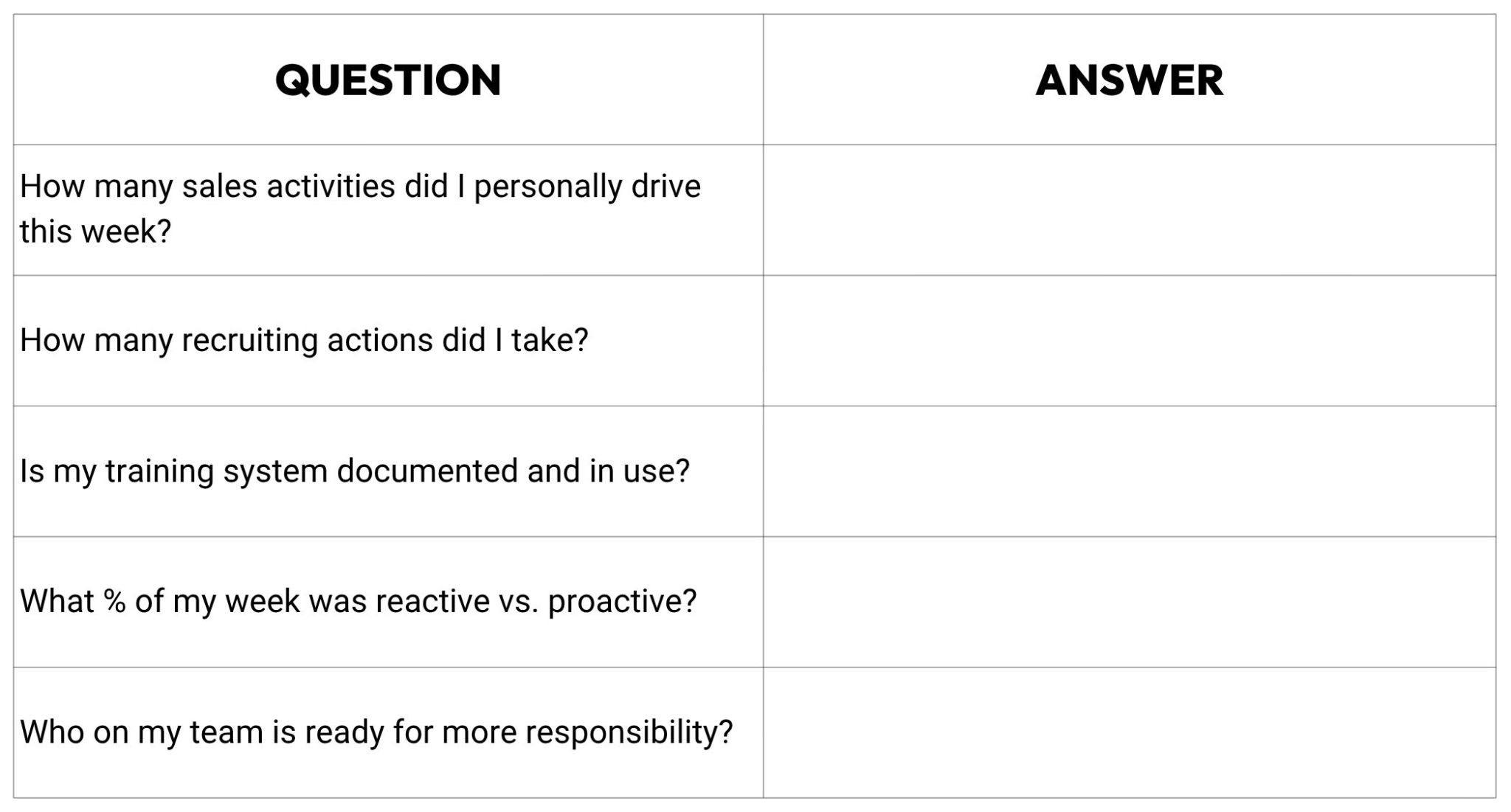
Three Drivers That Fuel Real Growth in the Small Team Stage
Reaching the Small Team stage means you’re no longer doing it all alone—but lasting growth requires more than keeping the wheels turning. This article explores three essential drivers that help pool business owners move from constant firefighting to real control: sales, recruiting, and training systems. Learn how to turn everyday service visits into sales opportunities, build a steady bench of reliable techs, and create repeatable training processes that free you from the day-to-day. With these systems in place, your business becomes scalable, sustainable, and ready for the next stage of growth.
Other pieces in this series
- Solopoolneurs and the leadership leap that changes everything
- From Driver to Delegator: How to build a team of leaders
- How to choose the future of your pool business
- Designing a Systematized Enterprise for ultimate pool company growth
Graduating from the Solopoolneur stage is a big accomplishment. Once you’ve built a small team, you’re no longer the only one out in the field every day. For the first time in a long time, you’re not doing everything yourself.
But even with a small team, you’re still doing a lot.
At this level, you're always just one call away from chaos. You’ve built just enough team to get into trouble, but not enough leadership or system support to stay out of it. On any given day, you could be dealing with:
- A tech quitting unexpectedly, slashing your field crew by 25% instantly.
- A customer’s pump failing—and guess what, you’re the only one who can fix it.
- Someone botching a route, which you now have to apologize for.
This is the Small Team stage—where you’re managing a small team but still running the day-to-day of the business yourself. It’s one of the trickiest to navigate, because you’re in a constant tug-of-war between reacting to problems and trying to grow the business.
Many business owners don’t find their way out of that tug-of-war. In fact, 85% of owners get stuck in this phase. They’re so busy driving the truck that they forget their real job is to drive the business.
To break out, you’ll need to shift gears. That means focusing less on keeping everything running and more on the things that will drive your business beyond this period of chaos.
In this article, I’ll walk you through three high-leverage drivers that will help you gain more freedom—and revenue.

Three ways to drive growth in the Small Team stage
1. Drive new sales
Most Small Team owners are so focused on fieldwork and customer service that they put new sales on the back burner.
This is a mistake. After all, at this stage, the easiest sale you can make is in the backyard you’re already standing in. If you can weave sales thinking into your daily operations, it’ll make a big difference.
You can easily drive new sales through:
- Proactive equipment evaluations: Instead of waiting for equipment to fail, train your team to inspect systems and note wear and tear. Then follow up with customers about needed repairs before problems occur.
- Upsells and upgrades: Many customers want upgrades, whether it’s automation, a new heater, or a new pump. But most of them won’t ask for it. Make it part of your culture to suggest these upgrades when appropriate.
- Referral program: You might have a referral program in theory, but are you really running it? A well-executed referral program is always on. Track who refers new business to you, and reward them visibly. Then talk about those rewards in your service emails so that your customers can see what they’re missing out on when they don’t participate.
- Inspection leads: Tap into real estate agents and homebuyers for paid pool inspections. Every inspection is a sales opportunity, often leading to new service customers.
2. Drive recruiting
Pool service is a high-turnover industry (meaning sooner or later, someone is going to quit). Most owners wait to recruit until they’re desperate. Smart owners, on the other hand, treat recruiting like sales—it’s always on.
What always-on recruiting looks like:
- Writing job ads that attract the right people. If you want to attract high-quality people, you have to speak directly to them. Rather than saying that you’re looking for a reliable tech, describe the values your company believes in. For example, “Work outdoors. Stay active. Make a difference. Join a team that treats you like family.”
- Post consistently. Post job ads monthly, even when you’re fully staffed. If you can build a bench of interested people, you’ll never be left high and dry if someone quits unexpectedly.
- Leverage your team. Offer referral bonuses to techs for bringing in their friends. Your best hires are often just one relationship away.
- Screen for culture, not just skill. When you’re running a small team, it only takes one toxic hire to set you back. Prioritize candidates’ values over their resumes. If you don’t like being around someone, don’t hire them.
3. Drive your training systems
Training new hires is essential, but if you have to personally train every new tech that joins your team, you’ll never scale. And if you have no documented training procedure in place, every new hire becomes a coin toss.
That’s why you need to build repeatable, documented training systems. Here’s what good training looks like in a small pool company:
- Have a written training plan: What should a tech know on Day 1, Day 5, and Day 10? Write it down, and make a checklist. If you can make the milestones visual, they’re easier to hit.
- Build accountability into field shadowing: Pair new hires with a lead technician and give them clear daily goals. Don’t just say “watch and learn.” Teach them specific procedures and track their progress.
- Use video aids: Record yourself walking through common tasks like cleaning filters, logging services in Skimmer, and managing tricky equipment. New hires can rewatch these as needed to get the hang of things.
- Build culture early: Training isn’t just about mechanics. It’s about mission, values, and the customer experience you want every tech to deliver. Make sure you communicate these thighs as a part of the training process.
If you’re not sure where to start, document what you already do. Getting it out of your head and into a system is a great first step.
Leadership exercise: The Small Team’s weekly audit
Want to stay focused on driving the business, week in and week out? Fill out a version of this quick self-assessment every week to refocus on the right activities.

Block 30 minutes this week to do this audit. When you’re done, choose one thing to delegate to a team member, one process to improve, and one recruiting task to execute. Do this every week, and you’ll be well on your way to the next phase of growth.
Final thought: Driving forward pays off
When you embrace the driver role in the Small Team Stage, a lot of cool things start to happen. You’ll start to notice that you:
- Close more sales without working more hours
- Build a team that sticks, because you’re always recruiting
- Stop bottlenecking training (and scale faster as a result)
- Create more space for yourself to think, plan, and lead
In short, you create the necessary space for your business to grow. You’re finally doing the right work, and I’ll bet it feels a lot better than running yourself ragged all the time.
About the creators
At Skimmer, we believe pool service professionals deserve better tools, stronger support, and better business outcomes. That’s why we built the leading software platform for pool and spa service companies.
Today, more than 30,000 pros across North America use Skimmer to streamline routes, get paid faster, and scale their operations—all while delivering consistent, professional service. Our mission is simple: modernize the industry and empower the people who keep it running.
Casey Graham has built and grown companies across multiple industries, including Yummy Pools, which rapidly expanded in the Atlanta market before being acquired by Trivest. Now, as VP of M&A for the Yummy Pools platform, he helps other pool companies grow through acquisition and operational excellence.
We partnered on this ebook because we share a belief: success in the pool service business isn’t only about profit—it’s about purpose, consistency, and the right systems to support your goals. Whether you’re starting out or leading a growing team, we hope this guide helps you align your “why” and move forward with clarity.

TL;DR
Most pool business owners get stuck in the Small Team stage—managing techs, putting out fires, and never quite breaking free. Real growth happens when you step back from the truck and start driving three things:
- Sales — Build proactive habits to grow revenue from your existing routes.
- Recruiting — Treat hiring like sales: always on, always building your bench.
- Training — Create repeatable systems so new hires don’t depend solely on you.
Do these consistently, and you’ll create space to lead instead of react.

















